Mars Opposition Season Images!

The public will likely learn from the media that the Mars Opposition is a “one-night” event, on October 13th, when the planet rises at sunset and is brighter and larger in appearance than usual. However, amateur astronomers know that the 2020 Mars Opposition is more like a “season,” where the planet grows in size each night over months, stays near peak size for a while, and then slowly fades away over the weeks. This gives us an observation window much longer than a single night!
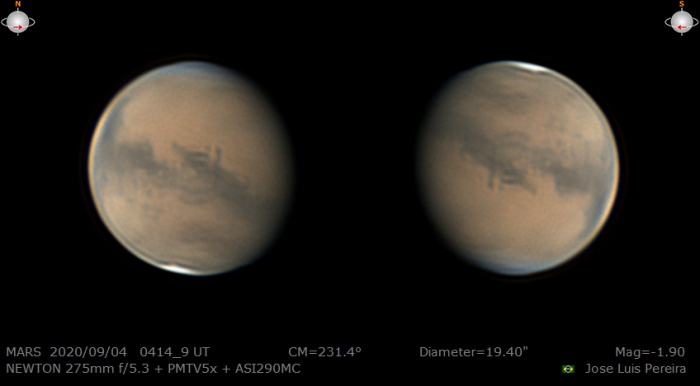
We also know that the date of Mars Opposition is not coincident with the planet’s closest approach. This year, on October 6th, Mars will be closest to Earth and achieve peak diameter, subtending an angle of 22.6″, a full week before Opposition on the 13th. It will have shrunk slightly to 22.4″ on the date of Opposition.
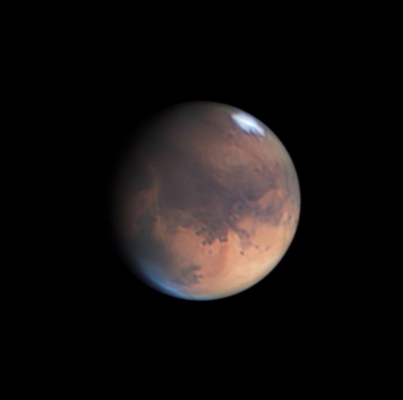
All Oppositions are not equal. Referring to the diagram at the top of this post, Mars is currently larger in diameter than it will be for any future Opposition through the year 2031. In less than two weeks, on September 23, it will exceed the peak diameter of the 2033 Opposition. It won’t be until the 2035 Mars Opposition, when it reaches 24.6” in diameter, that you’ll see the planet larger in the eyepiece. So, unless you’re planning a trip to Mars, this is the last “best” Mars viewing opportunity for a long-time to come.
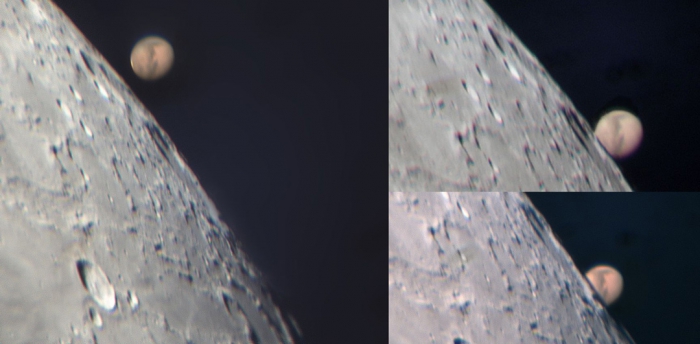
For those interested in the details, the Association of Lunar and Planetary Observers (ALPO) has a page for each Mars apparition created by Jeffrey D. Beish. You can find these pages by using the link: http://www.alpo-astronomy.org/jbeish/2020_MARS.htm and editing the URL to match the year (2022, 2025, etc.) of Opposition.
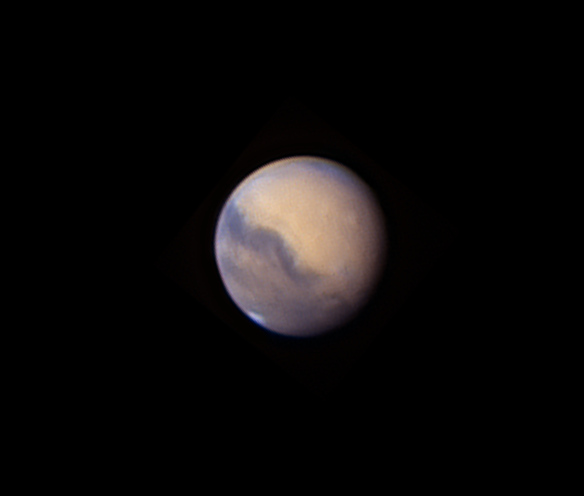
Anis Abdul has posted many exemplary planetary images on AstroBin. Here is his advice on imaging Mars with a big SCT.
I certainly am planning to image Mars up until Opposition. My usual setup (now) is a Celestron 14 XLT SCT, Televue 2.5x Powermate or Siebert 1.5x and ASI224MC, ASI290MC or ASI174MM camera — all depending on the conditions. I typically use Baader IRCut with both ASI224MC and ASI290MC and Baader LRGB with ASI174MM. I also use Baader IR685 and Optolong Venus-U sometimes.
For color cameras, I always use three parameters:
1. Histogram – I shoot for 70% (usually others seem to use 30-40 but I find the dynamic range is better and works with my processing style )
2. Gain – I try to keep lower gain (as much as possible without affecting frame rate too much) – 275 is my preferred gain in ASI290MC and 300 for ASI224MC
3. Frames per Second (FPS) – Mars is so bright it is easy to get 140 FPS, with 70% histogram @275 Gain with the C14 / 2.5x Powermate combination.
I also shoot with ROI mode [Region of interest mode crops recording to the area around the target] on so the videos are not very large. For Mars, I limit imaging to 200-seconds of videos. The stacking software, Autostakker!3, has no problem handling planetary rotation over that time. With the above setting, I typically have 32k frames in 13-15GB files. I usually stack with multi-scale AP and it works quite well without any artifact when sharpening.
Martian imagers have been busy taking, processing, and posting photos of the Red Planet on social media all summer long. Finer and finer details are emerging in the shots as the planet grows ever larger and imaging and processing techniques are refined from practice. You can see in the image below how the planet has grown in size over the month of August.
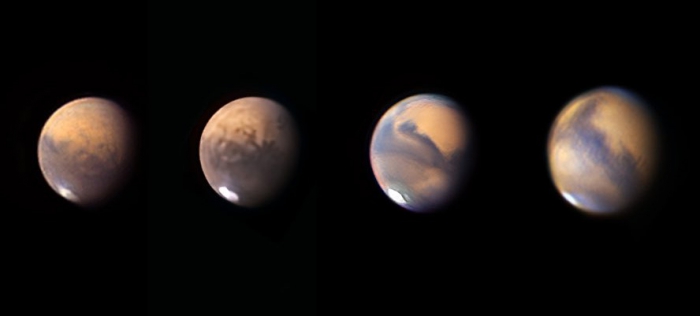

Planet after planet enters into Opposition with Earth as we whirl around the Sun. On September 11th it’s Neptune’s turn to rise at sunset and be in the sky all night long. It’s also closest to our planet and at it’s brightest for the year.
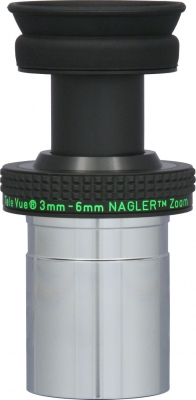
Still, you’ll have to crank up the power to differentiate it from the other magnitude 7.8 field stars. With the Nagler 3-6mm Planetary Zoom you won’t have to switch eyepieces to ferret out Neptune from the field stars. Just find the field containing the planet, center on your best suspect, and twist the black barrel to zoom in. If you hit upon it, you’ll be rewarded with the sight of the planetary disk of the last major planet in the Solar System. Depending on scope aperture, you can see the blue hue of the planet. With an 8″ or larger scope you can try for Triton (mag. 13.5) the major moon of the Neptunian system. Use the Sky & Telescope Triton Tracker to help locate that.
Neptune is so far away, that it wasn’t until the year 2011 that it completed its first orbit since its discovery in 1846. To read more about the discovery Neptune, see our 2017 blog post on the topic.
- On our website: Powermate™ amplifiers (mobile site)
- On our website: Barlow™ amplifiers (mobile site)


